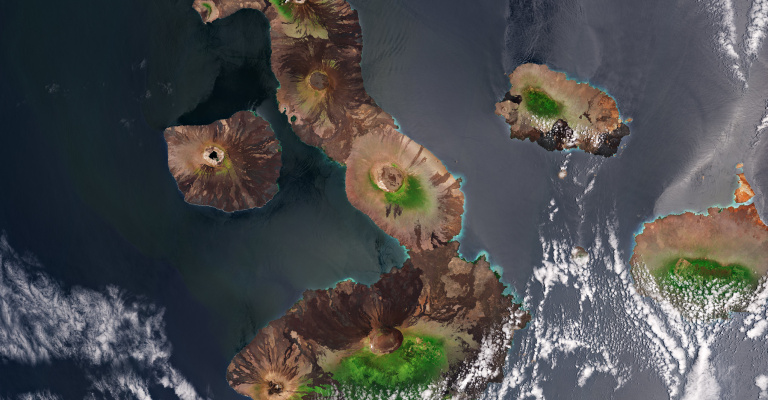
Ecuador’s Galápagos Islands reap the benefits of innovative financing
Authors
On 9 May 2023, Climate Fund Managers (CFM), a Netherlands-based blended finance private equity fund manager, and its portfolio company Ocean's Finance Company announced the financial closure of the largest debt-for-nature conversion in history. Now, the Galápagos Islands have a lifeline thanks to a financial breakthrough. CFM’s Stefan Wandrag and Jim Brands explain the historic transaction and give recommendations.
Through this financial innovation, Ecuador was able to free up limited fiscal space to invest in nature in the Galápagos Islands. This was possible by converting part of the country’s debt – $1.628 billion in Ecuadorian dollar-denominated bonds – into an impact loan of $656 million. The funding used to mobilise the conversion was sourced from capital markets by issuing what is known as a 'blue bond', backed by the guarantee of the US International Development Finance Cooperation (DFC). The Inter-American Development Bank (IADB) stepped up as well, providing a liquidity reserve.
The transaction provides the Ecuadorian government fiscal relief amounting to $1.126 billion while freeing up over $332 million for conservation efforts in the Galapagos Islands.
The impact is twofold: The transaction provides the Ecuadorian government fiscal relief amounting to $1.126 billion while freeing up over $332 million for conservation efforts in the Galápagos Islands. In addition, another $127 million has been allocated to an endowment fund ensuring the perpetual conservation of the Galápagos Islands.
The Galápagos Islands are a volcanic archipelago in the Pacific Ocean, 1,000 km off the coast of Ecuador. The islands have been the focus of conservation efforts for decades as they are home to an incredible array of species. The extreme isolation of the islands has allowed for unusual animal life to develop, including giant tortoises and a range of finches. In fact, it is said that the islands inspired Charles Darwin's theory of evolution by natural selection following his visit to the country in 1835.
The Galápagos are also home to the highest number of endemic species (those found nowhere else on the planet), including 59% of endemic vertebrates, 57% of endemic invertebrates and over 39% of endemic plants.
Yet, the very reasons that enable such high biodiversity also make these islands vulnerable to climate change and other disturbances, such as overfishing and invasive species. Geographic isolation inhibits species’ ability to migrate elsewhere as the climate warms and habitats are disrupted, meaning that the islands also have significantly higher extinction rates compared to other islands or continental ecosystems.
Ecosystems like the Galápagos Islands, specifically the surrounding Marine Protected Hermandad reserve, are prime examples of areas that can benefit from private sector financing to undertake the conservation activities necessary for their survival, particularly as temperatures continue to rise. This is why CFM started this transaction over three years ago, leveraging private sector finance towards environmental gains.
Based on a model piloted in Bolivia in the 1970s, the transaction has harnessed the power of guarantees from the DFC and IADB to create the largest ‘blue bond’ ever to capital markets. The conservation funding is used to protect the unique biodiversity of the islands and the Hermandad reserve through active patrolling and technology-enabled monitoring with drones and more sophisticated methods such as satellite monitoring.
The newfound financial resources also fund research and measurement activities to ensure that the conservation achieves its desired outcome as well as support the affected communities through sustainable fishing and tourism activities. The islands’ inhabitants will also reap the rewards as well as the Ecuadorian government, which benefits from a much-needed fiscal relief allowing the country, hard-hit by the Covid-19 pandemic, to tackle the worsening poverty and increasing inequality.
The driving force behind this transaction is the environmental benefits it promises, along with the belief that the private sector should play a role in mobilising resources towards environmental gains.
The driving force behind this transaction is the environmental benefits it promises, along with the belief that the private sector should play a role in mobilising resources towards environmental gains (such as conservation efforts) given its ability to attract financial resources at larger scales than the public sector. Hopefully this transaction will set a precedent for future endeavours. A good step in that direction is the in-principal approval from The European Commission's member states for a second transaction of this nature, in which the European Fund for Sustainable Development (backed by the European Commission's credit rating) will serve as the guarantor in lieu of the DFC and IADB.
Debt for climate conversions can be replicated successfully across several markets that display appropriate characteristics, namely governments with commitments towards conservation goals. These conversions also offer listed debt stock sufficiently discounted by the market. Transactions such as these could greatly support the 30x30 initiatives – a worldwide initiative for governments to designate 30% of the Earth’s land and ocean areas as protected areas by 2030.
The financial structure of a debt-for-nature conversion is complex. But there is a learning curve since CFM’s transaction and a number of takeaways from this experience. Key amongst these are:
The initial step should always be to identify the region and the conservation activities required. It is imperative to have clarity on the activities that will be funded before executing the swap. This is essential to guarantee that these activities are in line with the conservation objectives of the area and that their impact can be measured (which requires baseline information). This is also an area where CFM believes it adds value: by initiating and structuring the transaction, CFM ensures compliance with its own comprehensive environmental, social and governance standards during the development and implementation phases.
To structure the transactions, development finance is necessary. Debt-for-nature conversions are intricate and require extensive financial, legal, environmental and social expertise to navigate the intricacies of debt-for-nature operations and structuring. This aspect of the transaction is too precarious for private-sector investors and needs (public) concessional finance. In this case CFM received funding from the Climate Investor Two's development fund, financed by the Dutch Ministry of Foreign Affairs, the European Commission, the Green Climate Fund and the Nordic Development Fund.
With only six and a half years left to achieve the global target of conserving and managing 30% of the world's lands and waters, innovative financing mechanisms could facilitate game-changing conservation activities.
To avoid conflicts of interest and establish roles and responsibilities, it is essential to have clear governance structures in place. Debt-for-nature conversions involve numerous stakeholders, including host governments, capital markets, those responsible for structuring the deal, a guarantor, an implementation party for the conservation activities, and, crucially, the local communities residing in the protected natural areas. This means an inclusive, transparent, and fair framework, defined during the deal's structuring phase, is required.
Debt-for-nature conversions are most promising for countries with listed debt trading at discounted levels. The greater the discount at which the bonds are traded in public markets, the greater the savings and resulting conservation impact arising from the swap for the host government. This is a critical moment for global nature conservation.
With only six and a half years left to achieve the global target of conserving and managing 30% of the world's lands and waters, innovative financing mechanisms could facilitate game-changing conservation activities. Debt-for-nature swaps hold great promise for mobilising the private sector funding necessary to safeguard our lands and seas for future generations.
The views are those of the authors and not necessarily those of ECDPM.
Authors:
Stefan Wandrag – Executive / Deal-lead OFC – Climate Fund Managers
Jim Brands – Executive – Capital Raising & Business Development – Climate Fund Managers.



